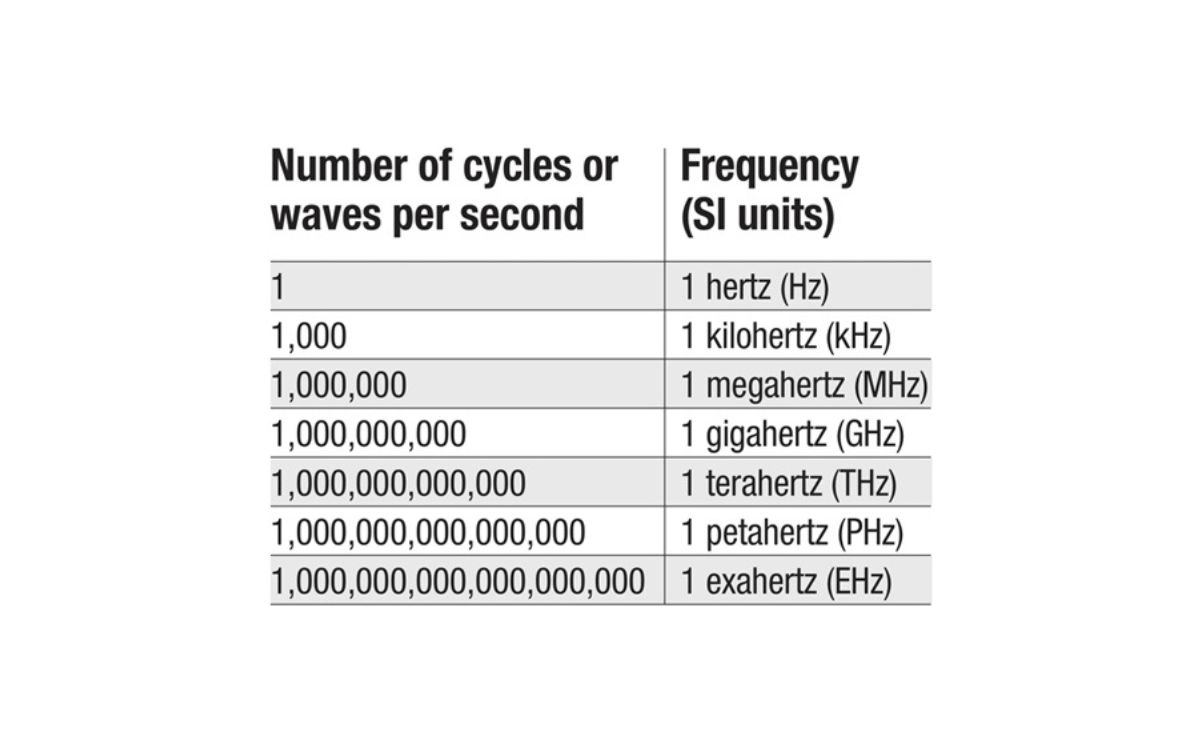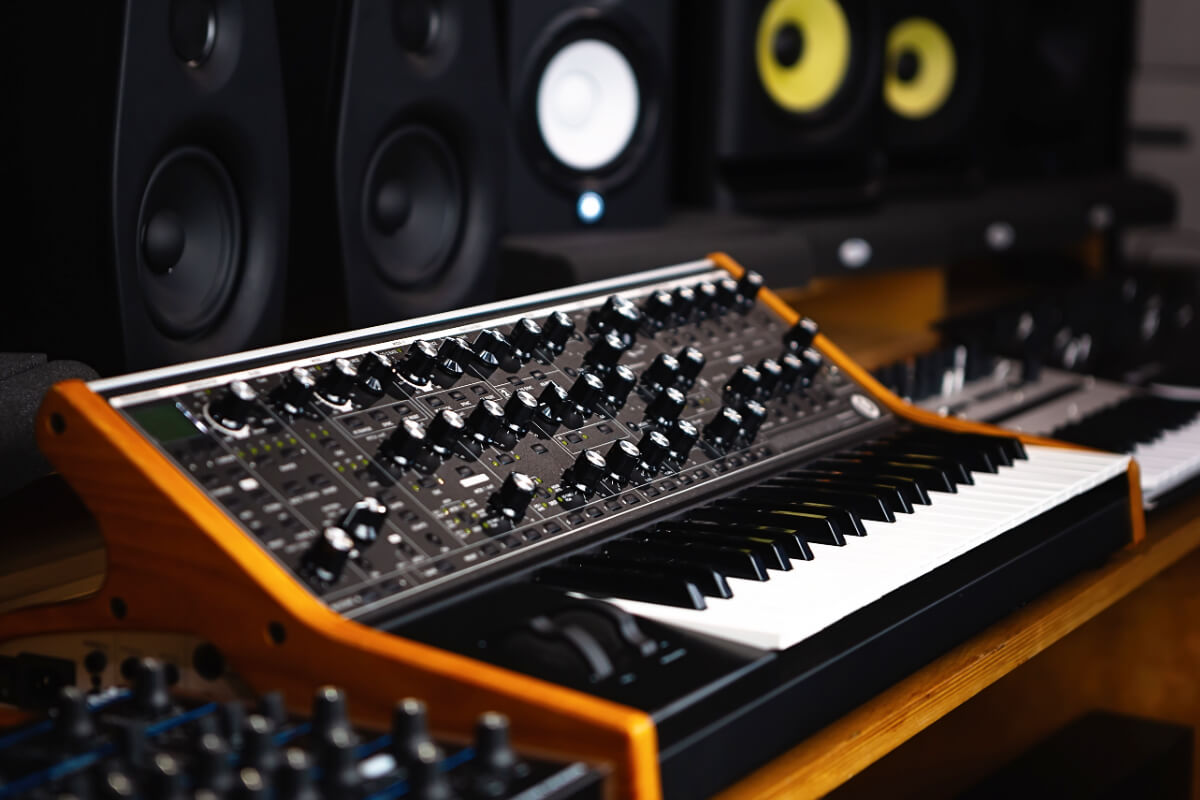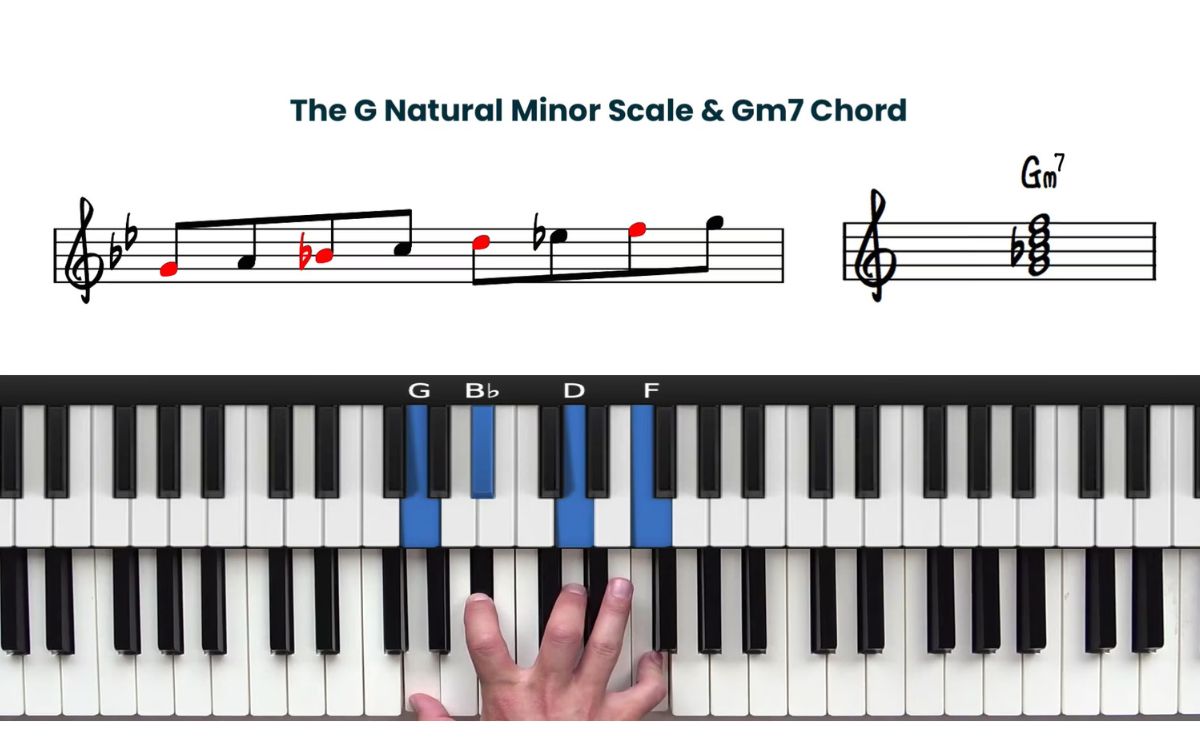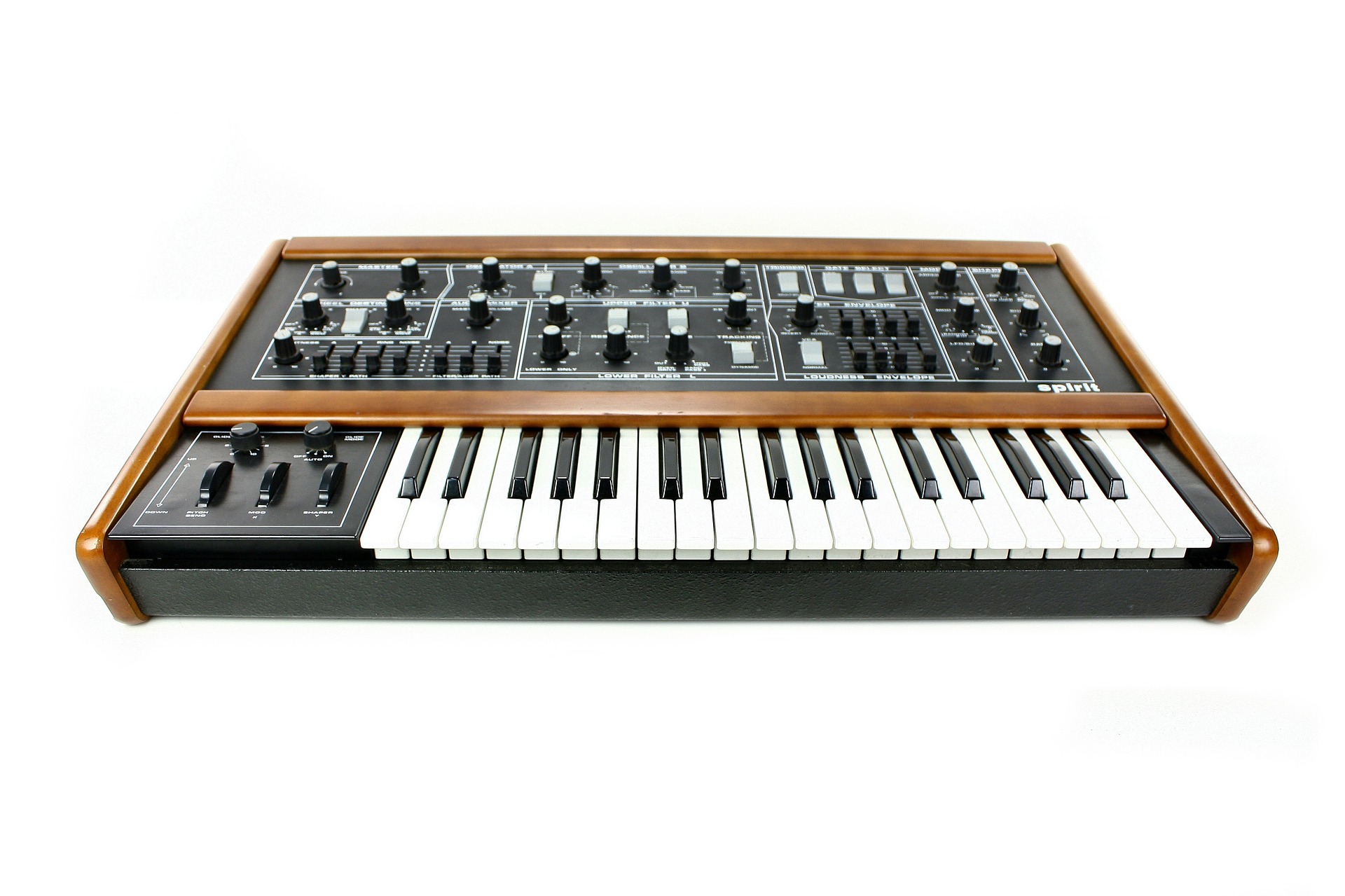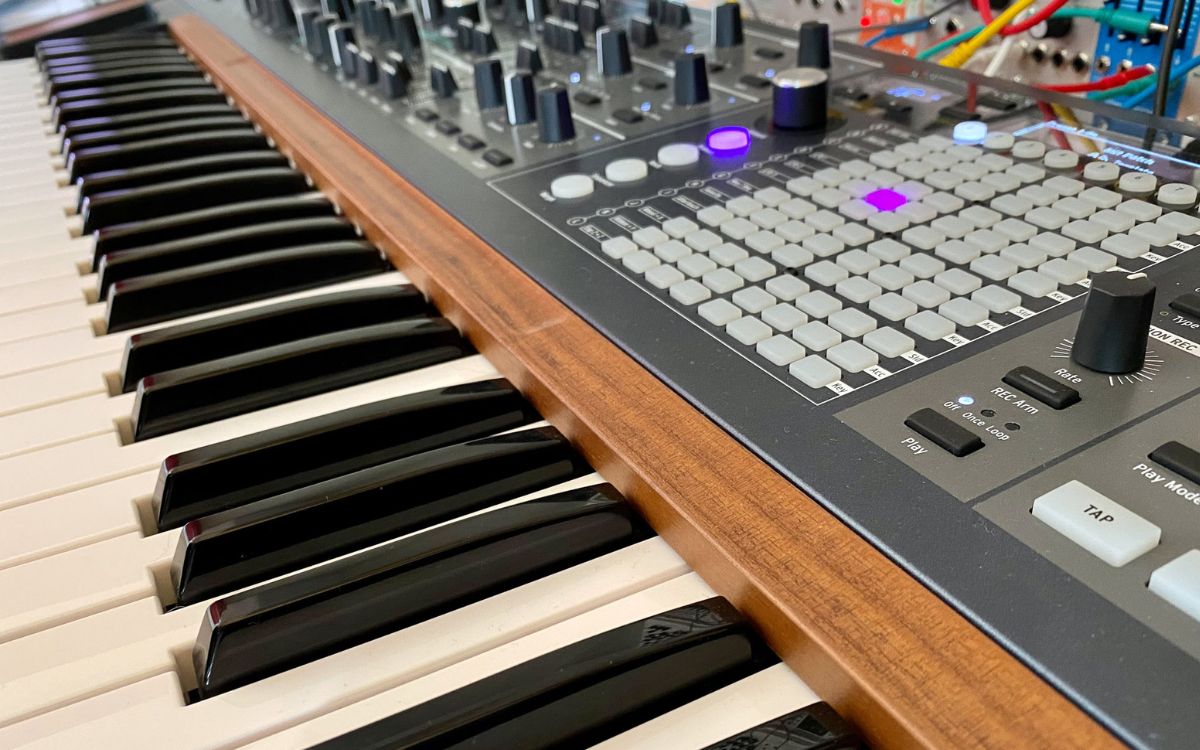Home>Instruments>Synthesizer>What Is A Wavetable Synthesizer?


Synthesizer
What Is A Wavetable Synthesizer?
Published: December 11, 2023
Learn about wavetable synthesizers and how they work. Discover the versatility of this powerful musical instrument and unleash your creativity with synthesizers.
(Many of the links in this article redirect to a specific reviewed product. Your purchase of these products through affiliate links helps to generate commission for AudioLover.com, at no extra cost. Learn more)
Table of Contents
Introduction
Welcome to the world of synthesizers, where music meets technology to create mesmerizing sounds and melodies. One type of synthesizer that has gained significant popularity in recent years is the wavetable synthesizer. With its unique sound generation mechanism, a wavetable synthesizer offers musicians and producers a wide range of possibilities for sound design and experimentation.
A wavetable synthesizer, as the name suggests, uses wavetables as the primary source of sound generation. But what exactly is a wavetable? In simple terms, a wavetable is a collection of single-cycle waveforms that can be played back in a sequenced manner to create complex and evolving sounds. These waveforms can range from simple sine waves to more complex and harmonically rich forms like sawtooth and square waves.
One of the defining features of a wavetable synthesizer is the ability to smoothly transition between different waveforms within the wavetable. This allows for dynamic and evolving sounds that can be modulated and manipulated in real-time. The sonic possibilities are virtually limitless, allowing musicians to create anything from lush pads and atmospheric textures to aggressive basslines and intricate leads.
…
In the following sections, we will delve deeper into the history, inner workings, advantages, and applications of wavetable synthesizers. We will also explore some of the most popular wavetable synthesizers available in the market today. So, buckle up and get ready to dive into the world of wavetable synthesis!
History of Wavetable Synthesizers
The concept of wavetable synthesis dates back to the late 1970s. The formative years of digital synthesis saw the emergence of the Fairlight CMI, a groundbreaking music production system that introduced the concept of wavetable synthesis to the world. The Fairlight CMI utilized a set of pre-recorded wavetables that could be manipulated and combined to create unique sounds.
However, it wasn’t until the early 1980s that wavetable synthesis gained widespread recognition with the release of the iconic PPG Wave synthesizers. Developed by Wolfgang Palm, the PPG Wave series brought wavetable synthesis into the mainstream music industry. These synthesizers offered musicians a vast selection of wavetables along with extensive modulation capabilities, resulting in rich and evolving sounds that were previously unheard of.
Over the years, wavetable synthesis continued to evolve and expand its footprint. In the 1990s, the advent of digital technology led to the development of more advanced wavetable synthesis techniques. Companies like Waldorf and Clavia released synthesizers that pushed the boundaries of wavetable synthesis, offering musicians even more control and sonic possibilities.
Fast forward to the present day, and wavetable synthesis has become a staple in the world of electronic music production. With the advancements in computing power and software development, virtual instruments and plugins have made wavetable synthesis accessible to a wider audience. This has led to the proliferation of wavetable synthesizers in both professional studios and home setups.
The history of wavetable synthesis is a testament to the creative innovation within the synthesizer industry. What started as a niche concept has now become an integral part of modern music production, shaping the sounds of various genres and driving the boundaries of sonic exploration.
Now that we have explored the history of wavetable synthesis, let’s take a closer look at how these synthesizers actually work and generate their unique sounds.
How Does a Wavetable Synthesizer Work?
At its core, a wavetable synthesizer works by playing back a series of waveforms, called wavetables, in a controlled and sequenced manner. These wavetables contain individual waveforms, such as sine waves, square waves, and sawtooth waves, which are then combined and manipulated to create complex and evolving sounds.
When a note is played on a wavetable synthesizer, the synthesizer looks up the corresponding position in the wavetable for that specific pitch and maps it to the pitch of the note being played. This process is known as wavetable scanning. The position in the wavetable is determined by the pitch of the note, and as the note is held or sustained, the scanning progresses through the wavetable, creating a continuous and evolving sound.
One of the key features of a wavetable synthesizer is the ability to smoothly transition between the waveforms within a wavetable. This allows for dynamic timbral variations and helps to create complex, evolving sounds. The transition between waveforms can be controlled through parameters like wavetable position, morphing, and modulation.
In addition to wavetable scanning, wavetable synthesizers also offer a range of modulation options to further shape and modulate the sound. This includes modulation sources like envelopes, LFOs (Low-Frequency Oscillators), and modulation matrices that allow for creative shaping of the sound over time. These modulation sources can be assigned to various parameters, such as wavetable position, filter cutoff, and amplitude, adding movement and expressiveness to the sound.
Furthermore, modern wavetable synthesizers often include additional features like filter sections, effects processors, and built-in sequencers or arpeggiators. This provides musicians with even more tools to shape and manipulate their sounds, making wavetable synthesizers versatile and powerful instruments for sound design and music production.
Now that we have explored how a wavetable synthesizer works, let’s move on to discussing the advantages of using wavetable synthesizers in music production.
Advantages of Wavetable Synthesizers
Wavetable synthesizers offer a range of advantages that make them a popular choice among musicians and producers. Let’s explore some of the key advantages of using wavetable synthesizers in music production:
- Versatility: Wavetable synthesizers provide a wide range of sonic possibilities. With the ability to smoothly transition between different waveforms, musicians can create complex and evolving sounds that suit a variety of musical genres. Whether you are looking for lush pads, aggressive basslines, or intricate leads, wavetable synthesizers offer the versatility to achieve the desired sound.
- Expressiveness: The dynamic and evolving nature of wavetable synthesis allows for expressive sound design. By modulating parameters like wavetable position, morphing, and filter cutoff, musicians can add movement and emotion to their sounds. This level of expressiveness is particularly valuable for creating evolving textures and captivating performances.
- Sound Design Capabilities: Wavetable synthesizers provide extensive sound design capabilities. Through manipulation of wavetables, modulation options, and effects processing, musicians can sculpt and shape their sounds with precision. This level of control enables creative exploration and encourages experimentation in sound design.
- Real-Time Manipulation: Wavetable synthesizers excel in real-time sound manipulation. With the ability to modulate parameters on the fly, musicians can tweak and evolve their sounds in real-time performances or studio recording sessions. This allows for dynamic and responsive soundscapes, enhancing the overall musical experience.
- Integration with Modern Production Workflows: Many wavetable synthesizers are available as virtual instruments or plugins, making them seamlessly integrate into modern production workflows. With the advancements in digital audio workstations (DAWs), musicians can easily incorporate wavetable synthesizers into their projects, utilizing the benefits of both hardware and software approaches.
These advantages make wavetable synthesizers a powerful and versatile tool for musicians and producers. The ability to create unique and evolving sounds, combined with the expressive control and integration possibilities, has cemented wavetable synthesis as a popular choice in contemporary music production.
Next, let’s explore some of the popular wavetable synthesizers that are widely used in the market today.
Popular Wavetable Synthesizers in the Market
With the growing popularity of wavetable synthesis, there are several impressive wavetable synthesizers available in the market. Let’s take a look at some of the most popular options:
- Serum: Serum, developed by Xfer Records, is a highly regarded wavetable synthesizer known for its intuitive interface and powerful sound design capabilities. It offers a vast library of wavetables, a versatile modulation system, and advanced effects processing, making it a popular choice among electronic music producers.
- Massive: Native Instruments’ Massive has been a staple in the world of electronic music production for over a decade. While not exclusively a wavetable synthesizer, it offers extensive wavetable functionality along with other synthesis methods. Massive is known for its warm and fat sound, making it a go-to choice for basslines and leads in various genres.
- WaveTable: Ableton Live users can take advantage of the built-in Wavetable synthesizer, which offers a user-friendly interface and a wide range of wavetable manipulation options. From basic wavetable scanning to complex modulation possibilities, Wavetable is a versatile option for both beginners and seasoned producers.
- Spire: Spire by Reveal Sound is a popular software synthesizer that combines wavetable synthesis with other traditional synthesis methods. It offers a vast selection of high-quality wavetables, versatile modulation options, and a powerful effects section. Spire is known for its warm and rich sound, making it versatile for various musical genres.
- Vital: Vital is a relatively new entrant in the world of wavetable synthesizers, but it has gained attention for its powerful sound engine and user-friendly interface. Developed by Matt Tytel, Vital offers a wide range of wavetable manipulation options, including custom wavetable creation, along with a unique spectral warping feature for added sonic possibilities.
These are just a few examples of the popular wavetable synthesizers in the market. Each synthesizer offers its own unique features, sound characteristics, and workflow, allowing musicians and producers to find the perfect fit for their needs and creative vision.
Now that we have explored various wavetable synthesizer options, let’s move on to discussing the applications of wavetable synthesizers in music production.
Applications of Wavetable Synthesizers
Wavetable synthesizers have found widespread use in various genres of music production. Their versatile sound generation capabilities and expressive control make them suitable for a wide range of applications. Let’s explore some of the common applications of wavetable synthesizers:
- Electronic Music Production: Wavetable synthesizers have become a staple in electronic music production. From creating lush pads, captivating leads, and powerful basslines, to designing intricate sound effects and atmospheric textures, wavetable synthesizers offer the versatility and sonic flexibility required in this genre. They allow producers to craft unique and evolving sounds that define the electronic music landscape.
- Film and Game Soundtracks: Wavetable synthesizers are extensively used in film and game soundtracks to create immersive and evocative soundscapes. With their ability to generate otherworldly sounds and evolving textures, wavetable synthesizers provide composers and sound designers with a powerful tool to enhance the storytelling experience. From creating haunting atmospheres to epic soundtracks, wavetable synthesizers add depth and character to the audio in films and games.
- Experimental and Ambient Music: Wavetable synthesizers are highly sought after in experimental and ambient music genres. Their ability to create unique and evolving textures, combined with the modulation possibilities, allow musicians to explore complex sonic landscapes and push the boundaries of traditional musical structures. Wavetable synthesizers provide a canvas for sonic experimentation, enabling artists to create immersive and meditative sound environments.
- Sound Design and Effects: Wavetable synthesizers are indispensable tools in sound design and effects creation. Their capacity to manipulate and modulate waveforms in real-time allows sound designers to craft dynamic and expressive sound effects for various media productions, including films, television shows, commercials, and video games. Wavetable synthesizers can generate everything from futuristic laser sounds to organic and textured atmospheres.
- Live Performances: Wavetable synthesizers have gained popularity in live performances, thanks to their real-time manipulation capabilities. Musicians and electronic artists can create unique sounds and textures, modulate parameters on the fly, and deliver expressive performances that engage and captivate the audience. The dynamic and evolving nature of wavetable synthesis adds depth and unpredictability to live shows, making each performance unique.
These are just a few examples of the applications of wavetable synthesizers in music production. Whether you are producing electronic music, scoring for films and games, delving into experimental genres, or crafting immersive soundscapes, wavetable synthesizers offer a powerful toolset to unleash your creativity and elevate your productions.
Now, let’s conclude our exploration of wavetable synthesizers.
Conclusion
Wavetable synthesizers have revolutionized the world of music production with their unique sound generation capabilities and versatile modulation options. From their humble beginnings in the late 1970s to their wide adoption in contemporary music production, wavetable synthesizers have become a staple tool for musicians and producers across genres.
The history of wavetable synthesis showcases the evolutionary journey of this technology, from the pioneering Fairlight CMI to the iconic PPG Wave synthesizers and the modern-day software virtual instruments. Each iteration contributed to the development and refinement of wavetable synthesizers, expanding their sonic palette and creative possibilities.
Wavetable synthesizers work by playing back a series of waveforms in a controlled manner, allowing for smooth transitions and modulation between wavetables. The versatility and expressiveness of these synthesizers make them popular choices for sound designers, electronic music producers, composers, and artists looking to create unique and evolving sounds.
With built-in modulation options, effects processing, and seamless integration into modern production workflows, wavetable synthesizers offer a wealth of sonic exploration and sound design possibilities. They have found applications in electronic music production, film and game soundtracks, experimental genres, sound design, and live performances.
Popular wavetable synthesizers like Serum, Massive, Wavetable, Spire, and Vital have become go-to instruments for musicians, offering diverse sound libraries, intuitive interfaces, and powerful sound manipulation options.
In conclusion, wavetable synthesizers have revolutionized the way music is created and perceived. Their unique and evolving sounds, combined with the expressive control and versatility they offer, have made them indispensable tools for musicians, producers, and sound designers. Whether you are crafting cutting-edge electronic music, scoring for films and games, or exploring experimental genres, wavetable synthesizers provide a powerful platform to unleash your creativity and push the boundaries of sonic possibilities.
So, dive into the world of wavetable synthesis, unleash your imagination, and let the mesmerizing soundscapes of wavetable synthesizers transport you to new musical realms.


